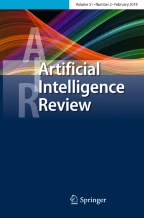Abstract
The goal of this article is to develop a translation method based on link grammar. Through this and to make it possible, we introduce a new formalism for syntactic analysis called Unification Link Grammar as a result of adding unification paradigms to link grammar. This brings about some other benefits such as more generative power, less complexity and being well organized for knowledge extraction. Based on this new formalism, we develop a translation method which is completely compatible with the linguistic basis of link grammar. This approach transfers graphs by using some kind of correspondence between the nodes and without using so called sub-constituents, sub-graphs or any similar concept. The introduced algorithm has a linear order time complexity. The implemented system shows the advantages of our approaches in covering complex structures of English language.
Similar content being viewed by others
Explore related subjects
Discover the latest articles, news and stories from top researchers in related subjects.References
Abeille A, Schabes Y, Joshi AK (1990) Using lexicalized tree adjoining grammars for machine translation. In: Proceedings of the 13th international conference on computational linguistics (COLING ’90), Helsinki
Adji TB, Baharudin B, Zamin N (2008) Applying link grammar formalism in the development of English-Indonesian machine translation system. Lect Notes Comput Sci 5144: 17–23
Allen J (1994) Natural language understanding. The Benjamin/Cumming Publishing Company, Redwood City
Berger AL, Brown PF, Pietra SD, Pietra VJD, Gillett JR, Lafferty JD, Mercer RL, Printz H, Ures L (1994) The candide system for machine translation. In: Proceedings of the human language technology workshop, pp 157–162
Joshi AK, Schabes Y (1992) Tree-adjoining grammars and lexicalized grammars. In tree automata and LGS. Elsevier, Amsterdam
Kaplan R, Bresnan J (1982) Lexical functional grammar: a formal system for grammatical representation. In: Bresnan J (ed) The mental representation of grammatical relations. MIT, Cambridge, pp 173–281
Kaplan R, Netter K, Wedekind J, Zaenen A (1989) Translation by structural correspondences. In: Fourth conference of the European chapter of the Association for Computational Linguistics
Knight K (1989) Unification: a multi-disciplinary survey. ACM Comput Surv 2(1): 93–124
Lafferty J, Sleator D, Temperly D (1992) Grammatical trigrams: a probabilistic model of link grammar. In: Proceedings of the AAAI fall symposium on probabilistic approaches to natural language
Megerdoomian K (2000a) Unification-based Persian morphology. In: Proceedings of CICLing, Alexander Gelbukh, Center of Investigation on Computation-IPN, Mexico
Megerdoomian K (2000b) Persian computational morphology: a unification-based approach. NMSU, CLR, Memoranda in computer and cognitive science report
Noord GV (1990) Reversible unification-based machine translation. In: Proceedings, 13th international conference on computational linguistics (COLING’90), Helsinki
Sleator D, Temperley D (1991a) Parsing English with a link grammar. Carnegie Mellon University Computer Science technical report CMU-CS-91-196
Sleator D, Temperley D (1991b) Parsing English with a link grammar. Third international workshop on parsing technologies
Sheiber S, Schabes Y (1990) Synchronous tree adjoining grammars. In: Proceedings of the 13th international conference on computational linguistics (COLING ’90), Helsinki, August. Association for Computational Linguistics
Shieber SM, Uszkoreit H, Pereira FCN, Robinson J, Tyson M (1983) The formalism and implementation of PATR-II. In: Grosz BJ, Stickel ME (eds) Research on interactive acquisition and use of knowledge. SRI report
Author information
Authors and Affiliations
Corresponding author
Rights and permissions
About this article
Cite this article
Sajadi, A., Borujerdi, M.R.M. Machine translation based on unification link grammar. Artif Intell Rev 39, 109–132 (2013). https://doi.org/10.1007/s10462-011-9261-7
Published:
Issue Date:
DOI: https://doi.org/10.1007/s10462-011-9261-7
